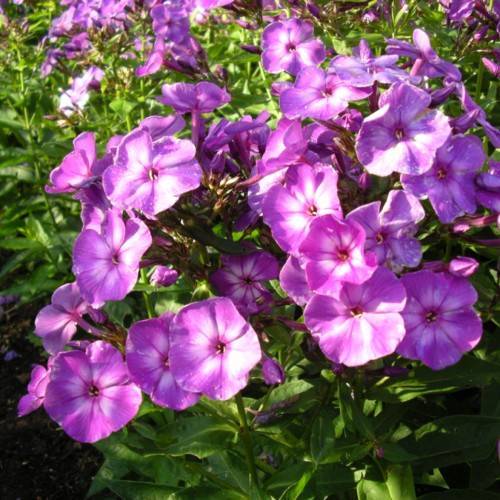
garden phlox
Phlox paniculata 'Barten' LILAC FLAME
Also Known As - border phlox,common phlox,common phloxCycle:
Herbaceous Perennial
Watering:
Average
Hardiness Zone:
4 - 8
Flowers:
Flowers In Summer
Sun:
Full sun, Part sun/part shade
Soil:
Rocky , gravelly , dry, Well-drained
Fruits:
Fruits In Autumn Ready In Fall
Leaf:
Yes
Growth Rate:
High
Maintenance:
Moderate
Drought Tolerant:
Yes
Care Level:
Medium
watering
Water your garden phlox every 7-10 days, depending on how hot and dry your summer is. Make sure soil is evenly moist, but not overly wet or soggy. Water the plant deeply enough that it can soak up water 6 to 8 inches deep. You can also check by feeling the top 1-2 inches of soil with your finger or a soil probe to make sure it is moist.
sunlight
Garden phlox (Phlox paniculata 'Barten' LILAC FLAME) thrives in full sun, which means it should get at least 6-8 hours of direct sunlight per day. However, if it receives more than 8 hours of direct sunlight daily, the blooms may become less vibrant, and the foliage may become scorched. Filtered sun or partial shade is ideal in very hot, sunny climates. In cooler climates, full sun is recommended, and afternoon shade may be beneficial. Plant your garden phlox in a spot that gets bright light all day or that has some shade in the afternoon.
pruning
The Garden phlox (Phlox paniculata 'Barten' LILAC FLAME) is an attractive and fragrant plant that produces long lasting flowers from mid-summer up until early fall and can also become quite tall and full. Pruning is necessary to keep your phlox looking neat and to encourage flowers. Pruning should begin when the plant is approximately 4 inches tall and continue throughout the summer season. For yearly pruning, it is best to trim a few inches from your plant after blooming has finished. Depending on the desired size of the plant, you can remove up to 1 third of the stems. Be sure not to remove all mature stems as this may result in a reduction of flower production. Prune again at the end of the season, or before winter, to thin out old and dead stems and reduce the overall size of the plant, as well as to promote better air circulation.
